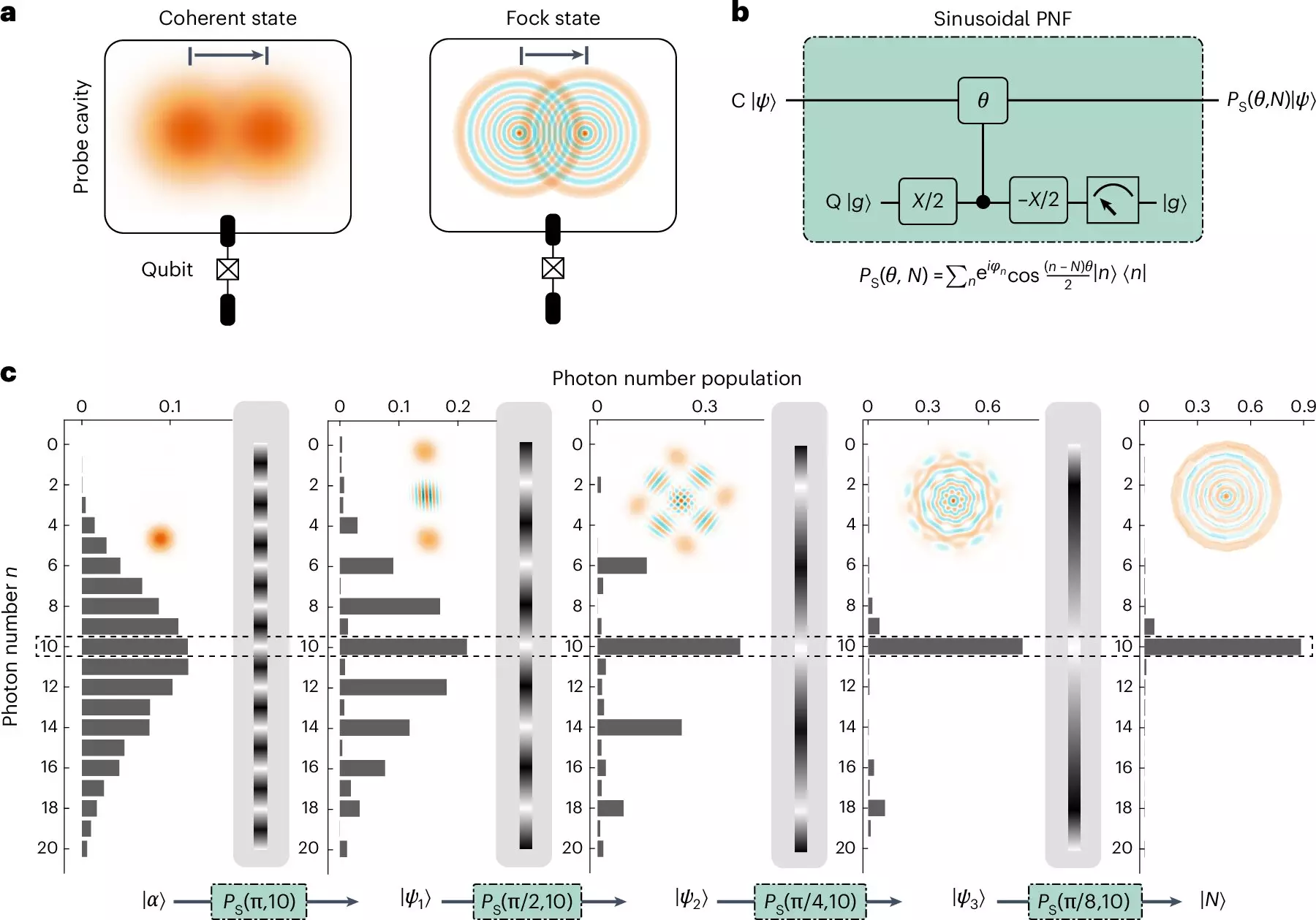The field of metrology, fundamentally the science of measurement, stands on the brink of transformation through the advent of quantum technologies. Accurate measurements have historically driven scientific breakthroughs across disciplines, including physics, engineering, and medicine. However, as our drive for precision intensifies, classical measurement methods face limitations that quantum-enhanced strategies aim to overcome. Recent developments in quantum-enhanced metrology propose a more profound understanding of physical phenomena, facilitating advancements that could redefine standards in measurement science.
At the heart of the recent breakthroughs in quantum measurement lies the concept of Fock states. These states, which represent a well-defined number of particles, such as photons in electromagnetic fields, are critical for attaining high precision in measurements. Recent studies, notably a joint effort from researchers at various prominent institutions, have focused on generating large Fock states to enhance measurement fidelity. These researchers propose that Fock states, particularly in microwave electromagnetic fields, can be harnessed for their exceptional sensitivity to displacement or shifts, thereby providing an unprecedented level of detection accuracy.
Yuan Xu, a noted co-author of a study published in *Nature Physics*, emphasizes that as the number of photons in a Fock state increases, the interference patterns—located in a phase space—become increasingly intricate. This intricacy directly correlates with an enhanced capacity to detect minute changes in weak microwave fields. Thus, by effectively manipulating Fock states, the potential for quantum-enhanced metrology reaches new heights.
Innovative Techniques for Generating Large Fock States
To realize the promise of Fock states in practical metrology applications, Xu and his colleagues developed a novel method for producing Fock states containing as many as 100 photons. This technique deviates from classical approaches by employing two specific types of photon number filters (PNFs)—sinusoidal PNF and Gaussian PNF. Each of these filters plays a unique role in purifying the photon count to achieve larger Fock states.
The sinusoidal PNF acts by implementing a conditional rotation within a Ramsey sequence, effectively blocking certain photon numbers by periodic grating. Conversely, the Gaussian PNF utilizes a qubit flip pulse to compress photon distributions toward a preferred Fock state. The beauty of this dual-filtering process lies in its efficiency; it tackles large photon counts with a logarithmic scaling strategy, vastly outpacing previous methods that typically required polynomial scaling.
The implications of these advancements are substantial. By generating large Fock states more efficiently, the researchers have surmounted previous technological hurdles that have constrained the field of quantum metrology. This capability opens the doors to more reliable and precise measurements that could ripple across various sectors such as fundamental physics, cosmology, and materials science.
Xu’s team has demonstrated their approach not only enhances measurement capabilities but does so with hardware efficiency. This means that it could be scaled practically to meet real-world applications without necessitating extreme resources or over-complex systems. Consequently, such adaptability makes these techniques applicable to various physical platforms—ranging from optical to mechanical systems—further broadening the potential impact of their findings.
Future Directions in Quantum Metrology
In the pursuit of further elevating metrological precision, the authors of this study have set ambitious new research goals. Their immediate tasks include augmenting the coherence properties of the quantum systems involved and developing scalable techniques for generating even larger Fock states. Achieving these goals could lead to groundbreaking metrological gains that surpass even the impressive 14.8 dB gain observed in preliminary tests, positioning their work closer to the Heisenberg limit and emphasizing the capabilities of quantum systems.
Beyond the confines of theoretical applications, the tangible benefits of these enhanced measurements are expected to permeate several scientific domains. They could facilitate advances in fields as varied as high-precision radiometry, could aid weak force detection mechanisms, and even contribute to the pursuit of dark matter. By pushing the boundaries of contemporary measurement science, these innovations foster a brighter future where precision measurement becomes virtually limitless.
The collaborative efforts in developing quantum metrology and Fock state generation illustrate a fresh paradigm in measurement techniques. The ability to utilize quantum principles to enhance precision significantly transforms how we approach complex scientific questions. As researchers continue to refine these methodologies and break new ground in quantum measurement, the ripple effects across various scientific disciplines will undoubtedly lead to groundbreaking discoveries that define the future of technology and science.


Leave a Reply